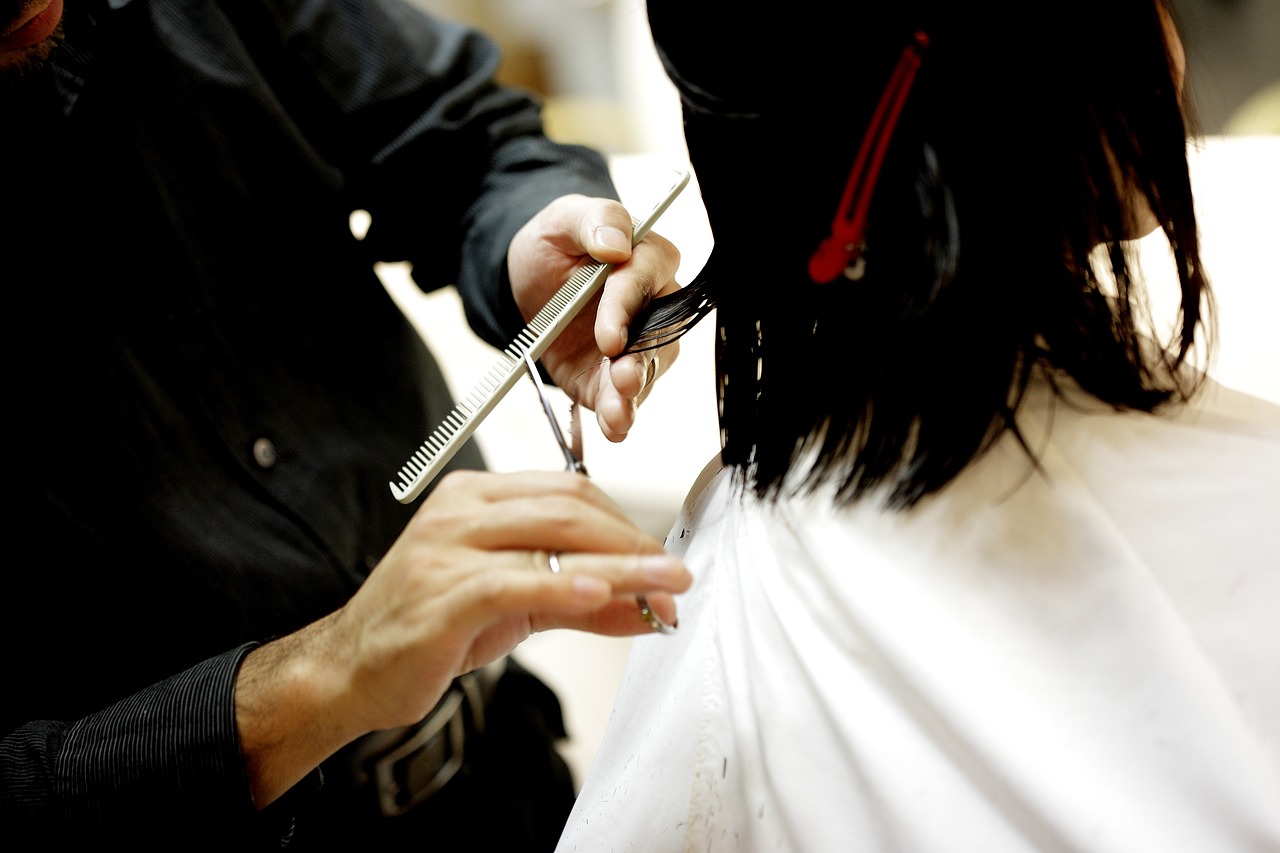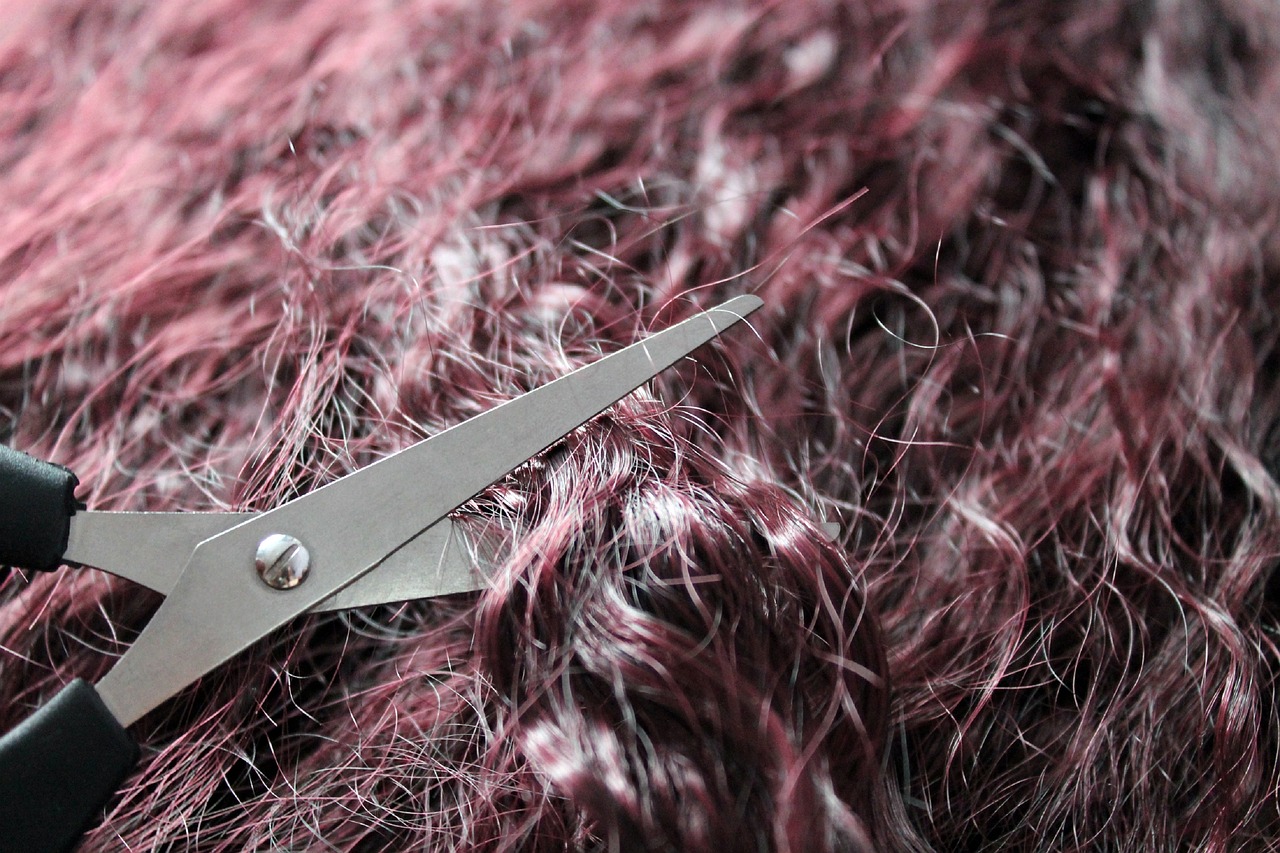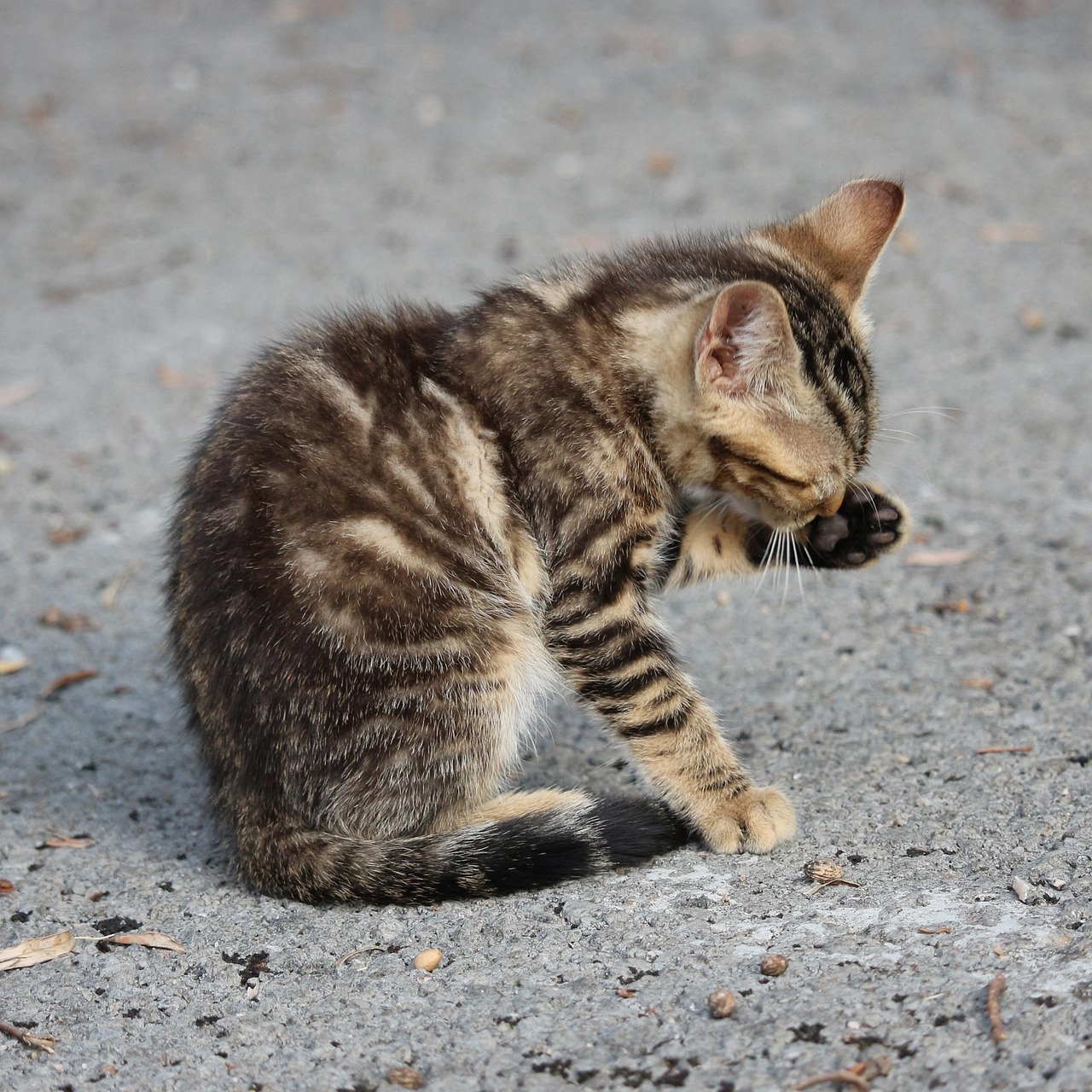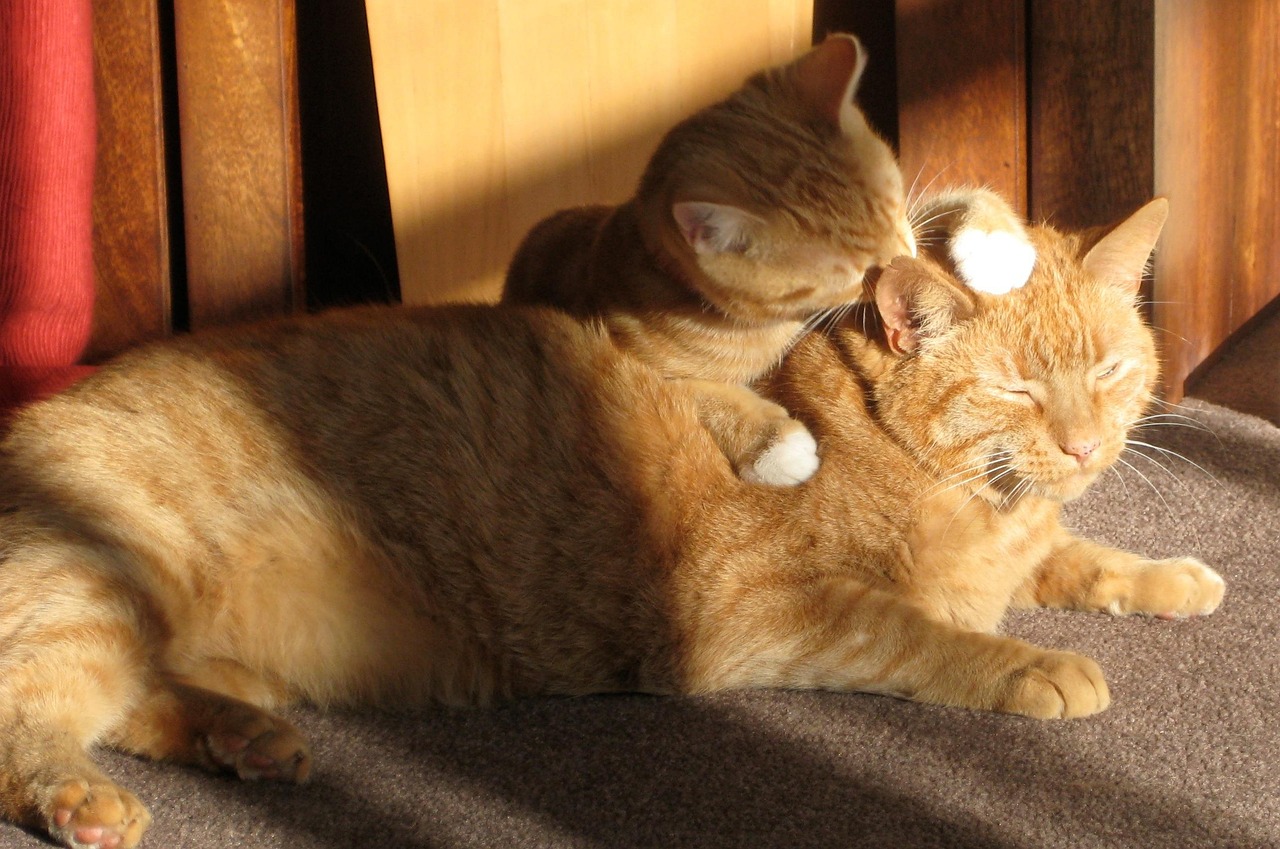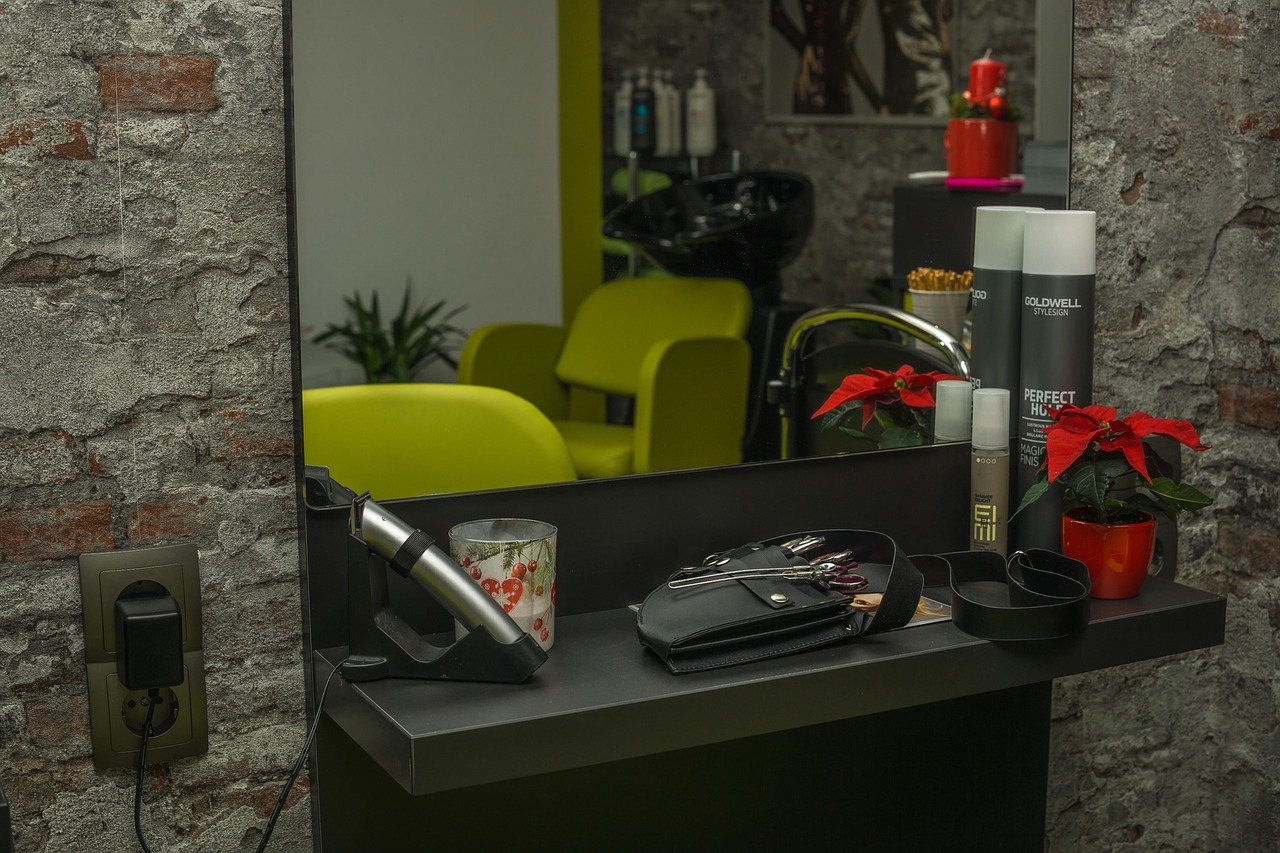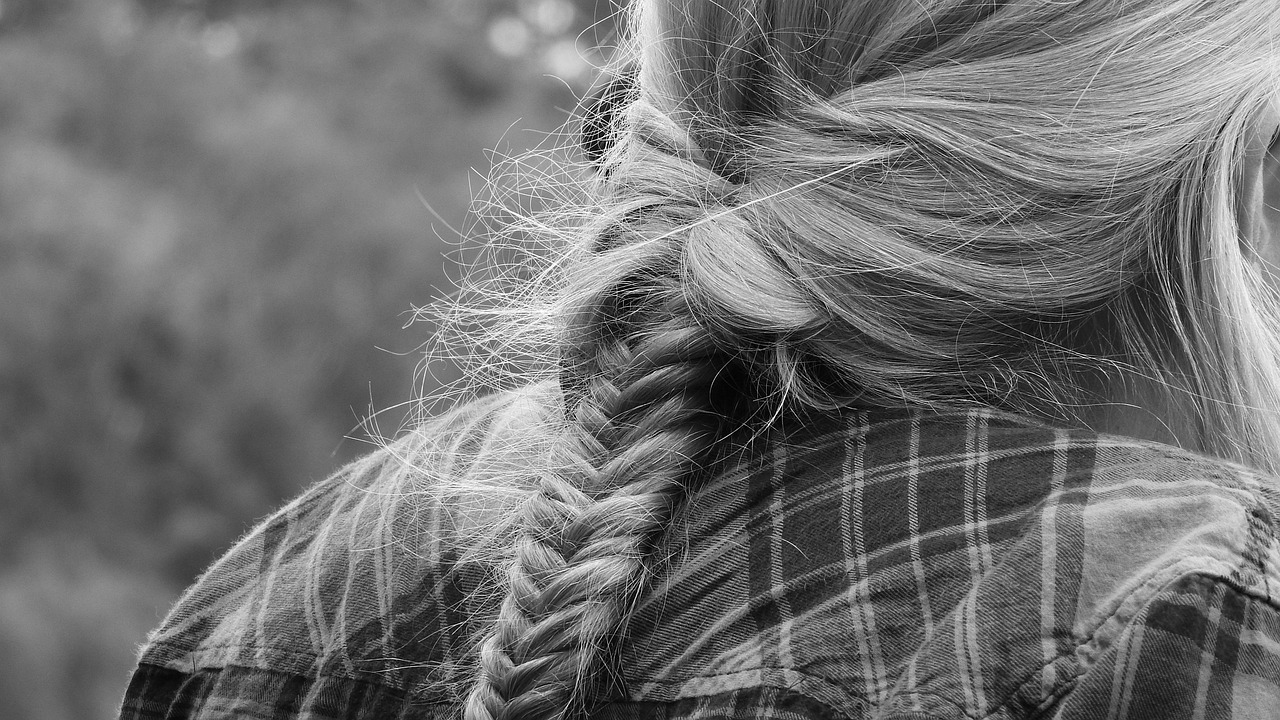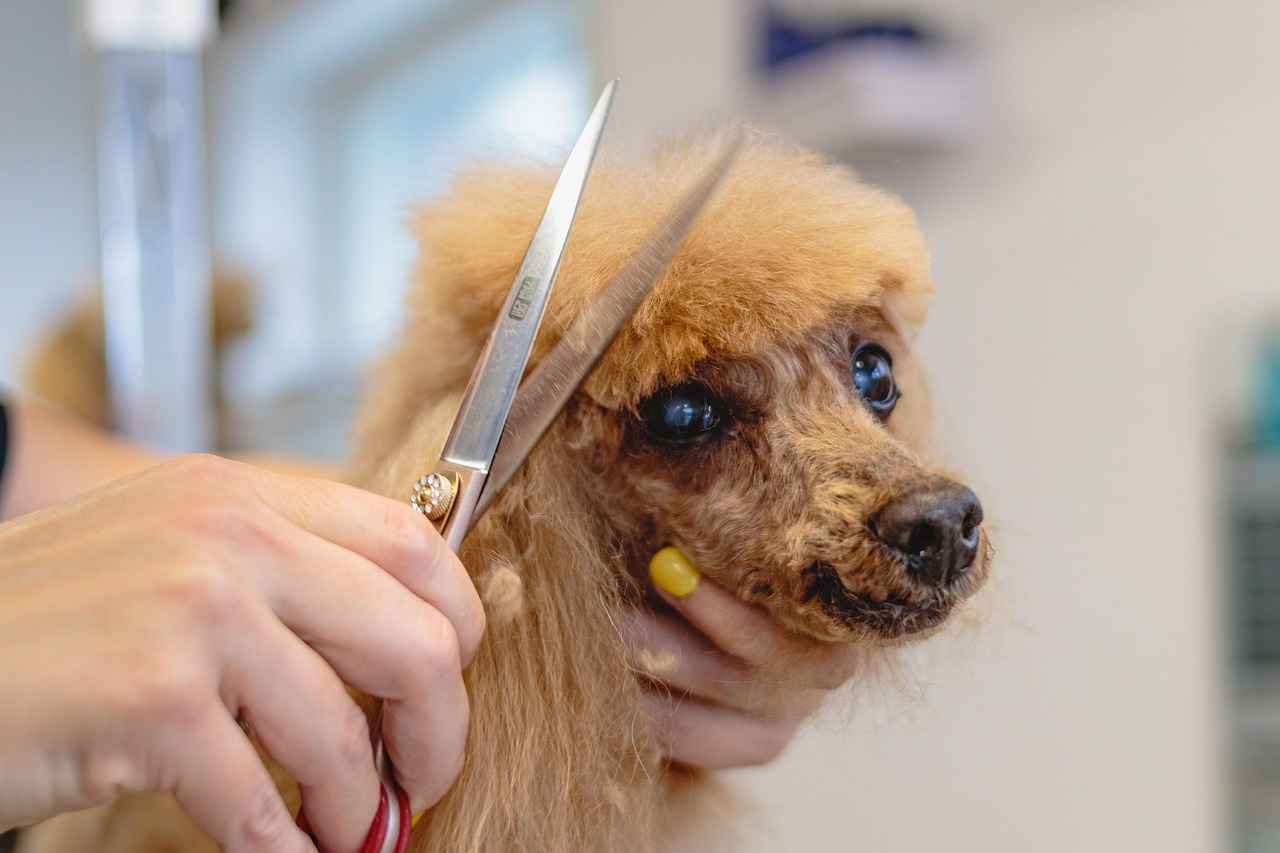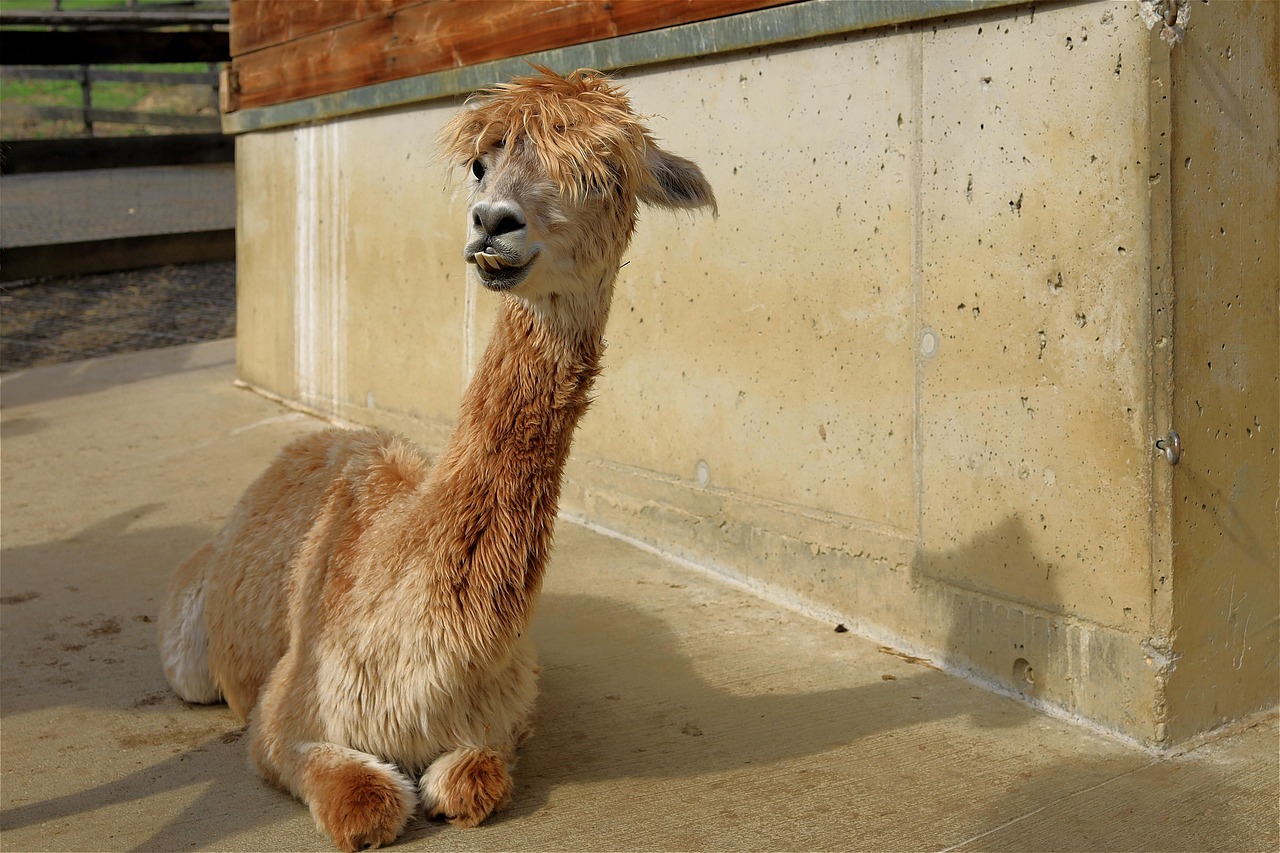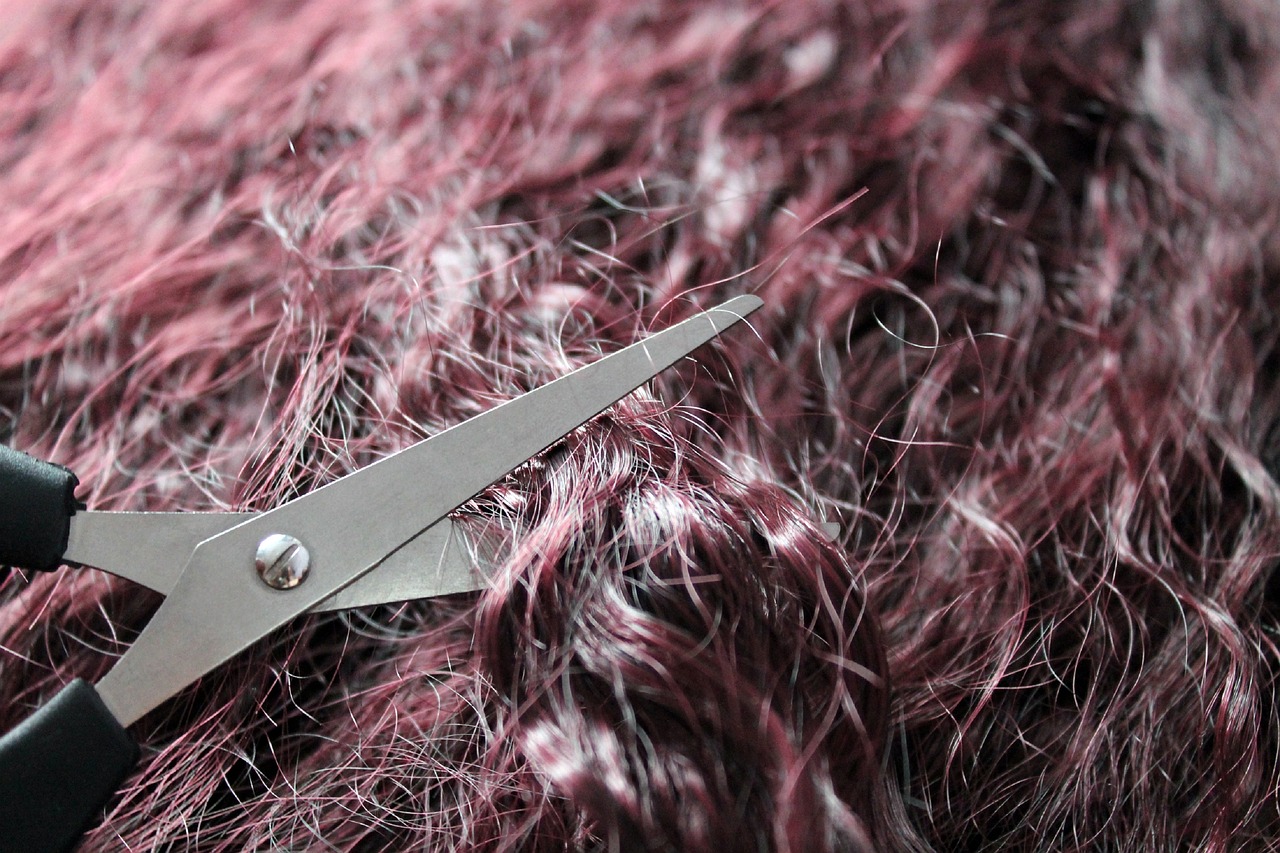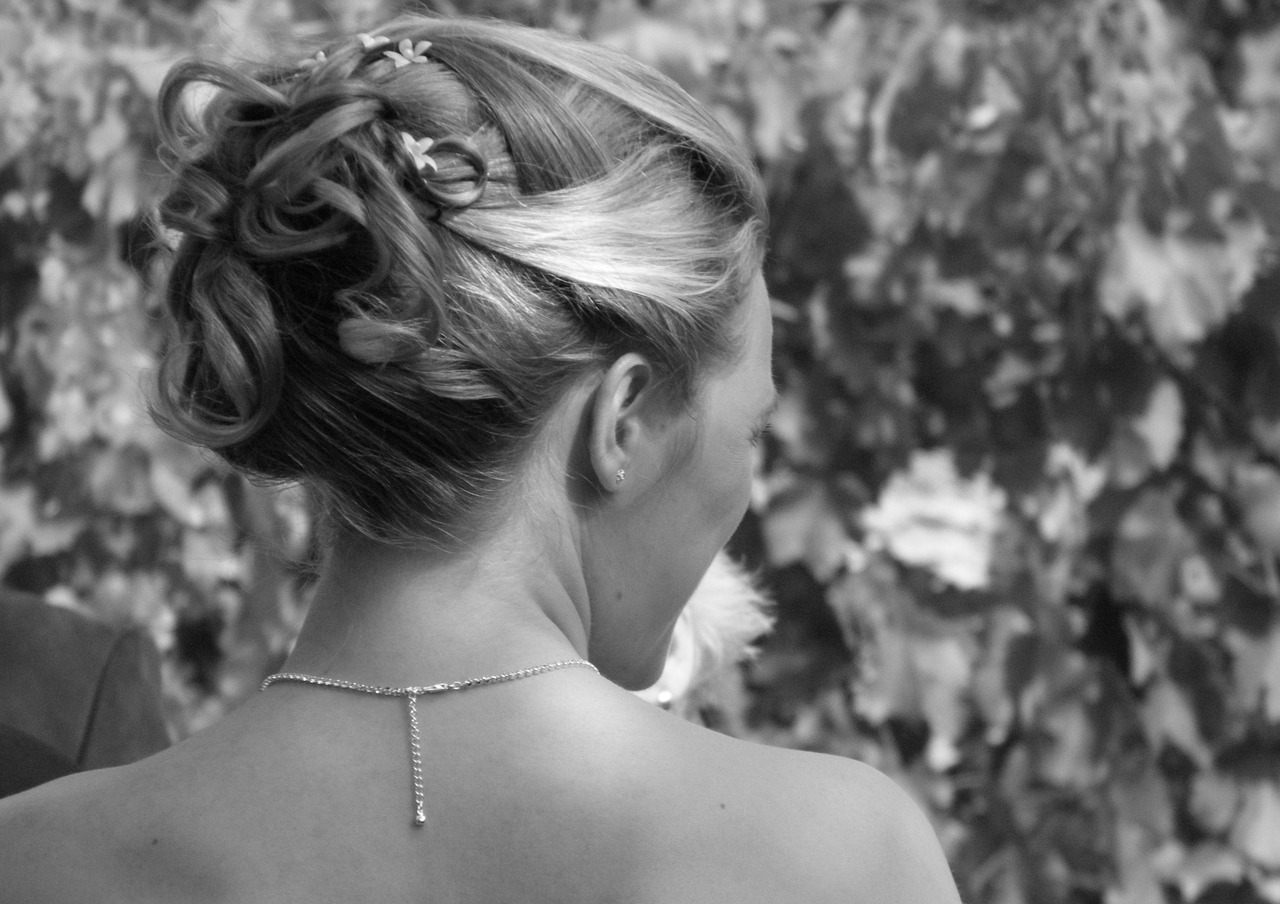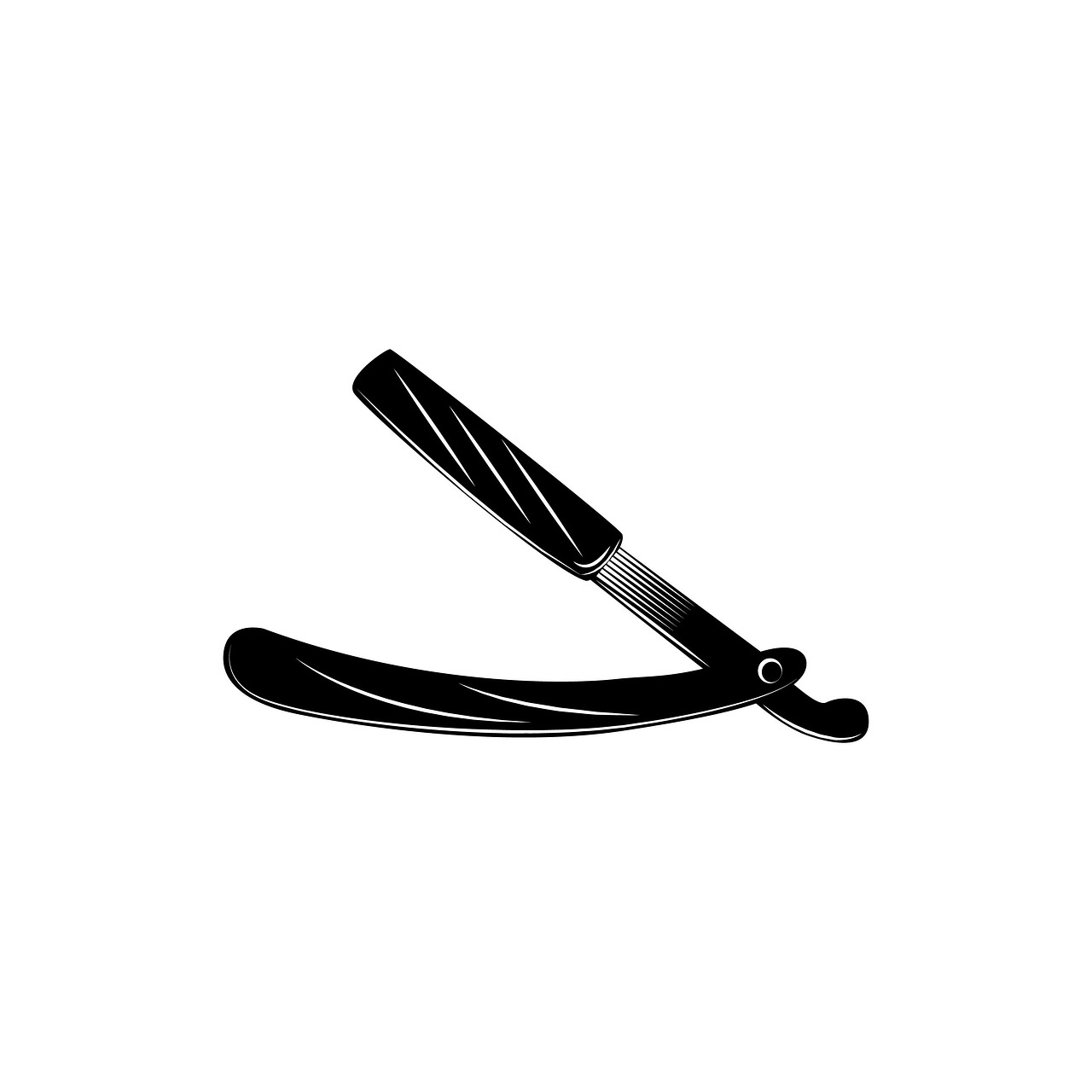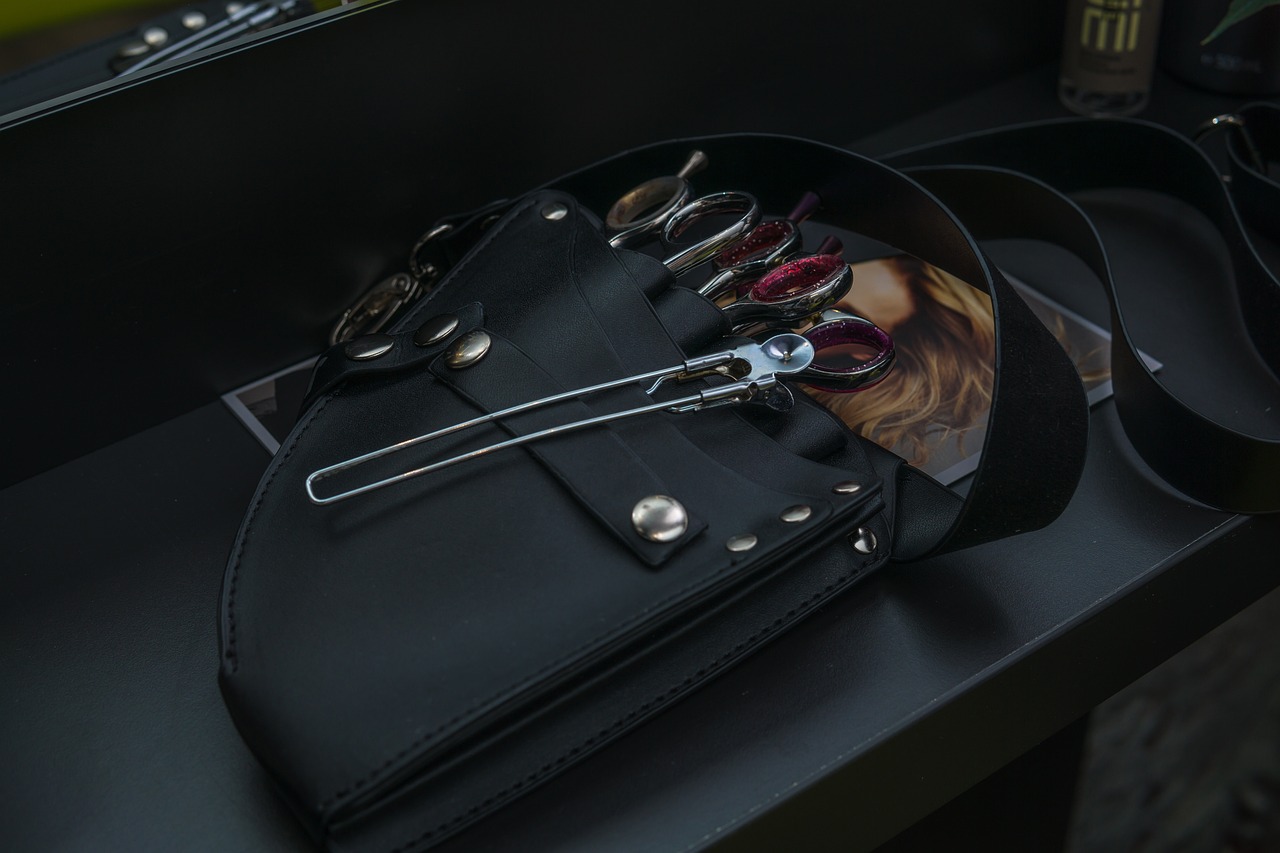This article delves into the best haircut styles for wavy hair, offering insights to enhance and define natural waves while catering to various face shapes and personal preferences. Wavy hair can be a beautiful asset, but selecting the right style is crucial for showcasing its natural texture.
What Are the Best Haircut Styles for Wavy Hair?
Choosing the right haircut can significantly enhance your natural waves. Popular styles that complement wavy textures include:
- Long Layers
- Textured Bobs
- Shag Cuts
Each of these styles can help ensure your waves are beautifully defined and manageable.
How Do Layers Enhance Wavy Hair?
Layers can add movement and volume to wavy hair, making it look fuller and more dynamic. Different layering techniques can enhance your waves and suit your face shape. For instance, long layers can create a soft, flowing look that enhances the natural wave pattern, while shorter layers can add texture and bounce.
Face Shapes That Suit Long Layers
Understanding which face shapes pair best with long layers can help you achieve a flattering look. Oval and heart-shaped faces often benefit from this style, as it enhances their natural features.
Styling Tips for Long Layers
To maintain the beauty of long layers, consider using lightweight styling products that enhance texture without weighing hair down. Sea salt sprays are particularly effective for defining waves and adding a beachy vibe.
Shorter Cuts: Bobs and Pixies
Shorter cuts like bobs and pixie styles can also work beautifully with wavy hair. These styles create a chic, modern look while still showcasing your natural texture. A textured bob, for example, can add structure and shape to your waves.
What Is the Ideal Length for Wavy Hair Cuts?
The ideal length for wavy hair cuts often depends on personal style and wave pattern. Here’s a breakdown of different lengths:
- Medium Length: Provides versatility and allows for various styling possibilities.
- Short Length: Makes a bold statement and is easier to maintain, highlighting the texture of wavy hair.
How to Maintain Wavy Hair After a Haircut?
Proper maintenance after a haircut is crucial for keeping wavy hair looking its best. Here are some essential tips:
- Essential Hair Products: Use shampoos and conditioners specifically designed for wavy hair to maintain moisture and definition.
- Styling Techniques: Implement effective styling techniques, such as diffusing or air-drying, to enhance your waves.
What Are the Common Mistakes to Avoid with Wavy Hair?
Avoiding common mistakes can help ensure your wavy hair looks its best. Here are a few pitfalls to watch out for:
- Over-Using Heat Styling Tools: Excessive heat can damage waves and lead to frizz. Minimize heat exposure and use protective products.
- Neglecting Regular Trims: Regular trims are essential for maintaining healthy waves. Aim to get a haircut every 6-8 weeks to keep your waves looking fresh and defined.
By understanding the best haircut styles, maintenance tips, and common mistakes to avoid, you can embrace your wavy hair and showcase its beauty with confidence.

What Are the Best Haircut Styles for Wavy Hair?
When it comes to embracing your natural waves, choosing the right haircut can make all the difference. Wavy hair has a unique texture that can be highlighted with the appropriate styles, enhancing both your waves and your overall appearance. From long layers to chic bobs, there are numerous options to consider that will beautifully define your waves.
Understanding which haircut styles work best for wavy hair is essential for showcasing its natural beauty. Here are some popular styles that can enhance your waves:
- Long Layers: Ideal for those who want to maintain length while adding movement and volume. Long layers allow your waves to flow naturally, creating a soft and romantic look.
- Bob Cuts: A classic bob can be a fantastic choice for wavy hair. This style can range from chin-length to shoulder-length and offers a modern, fresh appearance while still allowing your waves to shine.
- Shag Cuts: The shag haircut, with its choppy layers and textured finish, can add a playful vibe to your waves. This style is particularly effective for enhancing volume and dimension.
- Pixie Cuts: For those looking for a bold change, a pixie cut can highlight your waves in a fun and edgy way. This style is low-maintenance and can bring out the natural texture of your hair.
Layers play a crucial role in enhancing wavy hair. They add movement and volume, making your hair look fuller and more dynamic. The right layering technique can help define your waves and make them appear more pronounced.
Long layers are particularly beneficial for those with longer hair. They create a soft, flowing look that enhances the natural wave pattern without sacrificing length. This style works well for various face shapes, especially oval and heart-shaped faces, as it frames the features beautifully.
Shorter cuts like bobs and pixies can also work wonders for wavy hair. These styles can create a chic, modern look while still showcasing your natural texture. Bobs can be tailored to your desired length, while pixies are perfect for a daring and stylish statement.
The ideal length for wavy hair cuts often depends on personal style and the specific wave pattern. Here’s a breakdown of popular lengths:
- Medium Length: This versatile option allows for various styling possibilities while showcasing waves effectively.
- Short Length: A bold choice that highlights the texture of wavy hair, creating a playful and lively appearance.
Proper maintenance is crucial for keeping wavy hair looking its best. Here are some essential tips:
- Use the Right Products: Invest in shampoos and conditioners specifically designed for wavy hair. Look for products that enhance texture without weighing your hair down.
- Styling Techniques: Techniques such as diffusing or air-drying can enhance your waves. Experiment to find what works best for your hair type.
Avoiding common mistakes can help ensure your wavy hair looks its best:
- Over-Using Heat Styling Tools: Excessive heat can damage your waves. Minimize heat exposure and use protective products when styling.
- Neglecting Regular Trims: Regular trims keep your waves looking fresh and defined. Aim for a trim every 6-8 weeks to maintain your style.

How Do Layers Enhance Wavy Hair?
When it comes to enhancing the beauty of wavy hair, the right haircut can make a significant difference. One of the most effective techniques for achieving a vibrant and voluminous look is through layering. In this article, we will explore how layers enhance wavy hair, the various techniques available, and how to choose the right style for your face shape.
Layers are a fantastic way to add movement and volume to wavy hair. By removing weight from the hair, layers allow for natural waves to bounce and flow freely, creating a fuller and more dynamic appearance. This technique can transform flat waves into a lively and textured hairstyle.
- Long Layers: Ideal for those with longer hair, long layers enhance the natural wave pattern without sacrificing length. This technique creates a soft, flowing look that adds dimension.
- Short Layers: Short layers can add a playful edge to your waves, making them appear more voluminous and full of life. This style works particularly well for medium to short hair lengths.
- Face-Framing Layers: These layers are cut around the face to highlight your features while enhancing the overall wave structure. They can soften sharp angles and create a more balanced appearance.
Selecting the appropriate layering technique is crucial for achieving a flattering look. Here’s how different face shapes can benefit from layers:
| Face Shape | Recommended Layering Technique |
|---|---|
| Oval | Long layers that enhance the natural wave |
| Round | Face-framing layers to elongate the appearance |
| Square | Soft layers that add movement and reduce sharpness |
| Heart | Long layers that draw attention to the eyes |
To maintain the beauty of layered waves, consider the following styling tips:
- Use Lightweight Products: Opt for styling products that enhance texture without weighing down your hair. Sea salt sprays and can define your waves beautifully.
- Air Dry or Diffuse: Allowing your hair to air dry or using a diffuser can enhance the natural wave pattern and prevent frizz.
- Regular Trims: Keeping your layers fresh with regular trims is essential for maintaining the shape and health of your waves.
While layering can enhance your waves, there are common pitfalls to watch out for:
- Over-layering: Too many layers can lead to a choppy look. It’s essential to find the right balance to maintain a cohesive style.
- Ignoring Hair Texture: Not all wavy hair types respond the same to layers. Consult with a stylist to find the best approach for your unique texture.
In conclusion, layers can significantly enhance the appearance of wavy hair, providing movement, volume, and a more dynamic look. By understanding the different layering techniques and selecting the right style for your face shape, you can achieve beautiful, defined waves that complement your features.
Long Layers for Added Volume
Long layers are a fantastic choice for those with wavy hair, as they not only enhance the natural texture but also add a sense of movement and dimension. This haircut style is particularly effective for individuals who want to keep their hair long while ensuring it looks lively and full. By incorporating layers, you can create a soft, flowing look that beautifully complements the natural wave pattern of your hair.
One of the key benefits of long layers is their ability to add volume without sacrificing length. When strategically placed, layers can lift the hair at the roots, allowing the waves to cascade more freely. This results in a dynamic and vibrant appearance that can turn heads. Additionally, long layers can help to reduce bulk in thicker hair, making it more manageable and easier to style.
For those wondering, which face shapes suit long layers? Generally, individuals with oval and heart-shaped faces find that long layers enhance their features beautifully. The soft framing created by the layers can accentuate cheekbones and jawlines, adding a flattering touch to the overall look. On the other hand, those with square or round faces might consider layering techniques that soften the edges, providing a more balanced appearance.
To maintain the beauty of long layers, it’s essential to adopt effective styling techniques. Using lightweight products such as mousse or sea salt spray can enhance your waves without weighing them down. These products help to define the texture, giving your hair a beachy, effortless vibe. Moreover, consider using a diffuser when blow-drying to minimize frizz and encourage natural wave formation.
Another important aspect to consider is the maintenance of long layers. Regular trims are crucial for keeping your layers looking fresh and preventing split ends. Aim for a trim every 6 to 8 weeks, depending on your hair growth rate and overall health. This routine will ensure that your layers remain defined and your waves stay bouncy.
In summary, long layers are an excellent choice for enhancing wavy hair, providing volume and movement while maintaining length. With the right styling products and regular maintenance, you can achieve a stunning look that showcases your natural waves. Whether you have an oval, heart, or another face shape, long layers can be tailored to suit your unique features, making them a versatile and stylish option for anyone with wavy hair.
Face Shapes That Suit Long Layers
When it comes to selecting the perfect haircut, understanding your face shape is crucial, especially for styles like long layers. Long layers can add movement, dimension, and a touch of elegance to your hair, but they are not universally flattering. By knowing which face shapes pair best with this style, you can achieve a look that enhances your natural beauty.
Long layers can be particularly flattering for certain face shapes. Here’s a closer look at how they work with different features:
- Oval Faces: This shape is often considered the most versatile. Long layers can enhance the natural symmetry of an oval face, adding softness around the jawline and highlighting the cheekbones. The flowing layers can create a beautiful frame that accentuates the face’s natural proportions.
- Heart-Shaped Faces: Heart-shaped faces have a wider forehead and a narrower chin. Long layers can help balance this shape by adding volume around the chin area, drawing attention away from the forehead. Soft layers can create a more harmonious look, making the face appear more oval.
- Square Faces: For those with square faces, long layers can soften the angular features. By incorporating layers that start below the chin, you can create a more rounded appearance, which helps to balance the strong jawline.
- Round Faces: Long layers can also work well for round faces, especially when the layers begin below the chin. This technique elongates the face, making it appear slimmer. Adding some texture at the ends can further enhance this effect.
Once you know your face shape, the next step is to choose the right layering technique. Here are some tips:
- Face-Framing Layers: These layers start around the face and can be tailored to highlight your best features. For example, shorter layers around the face can accentuate cheekbones and jawlines.
- Subtle Layers: If you prefer a more understated look, subtle long layers can add movement without overwhelming your natural texture. This technique is ideal for those who want a low-maintenance style.
To keep your long layers looking their best, consider the following styling tips:
- Use Lightweight Products: Heavy products can weigh down your hair and diminish the flow of your layers. Opt for lightweight mousses or sprays that enhance texture without adding bulk.
- Embrace Natural Texture: Wavy or curly hair can look stunning with long layers. Use a curl-enhancing cream or sea salt spray to define your waves and add volume.
In conclusion, understanding which face shapes suit long layers can significantly enhance your overall look. Whether you have an oval, heart-shaped, square, or round face, long layers can be tailored to flatter your unique features. By choosing the right technique and styling products, you can achieve a beautiful, dynamic hairstyle that showcases your natural beauty.
Styling Tips for Long Layers
When it comes to styling long layers in wavy hair, achieving the perfect look requires a combination of the right products, techniques, and a bit of creativity. Long layers can beautifully frame your face and enhance your natural waves, but they also require specific care to maintain their beauty and bounce.
Using lightweight styling products is essential for long layers as they allow your hair to breathe while enhancing its natural texture. Heavy products can weigh down your waves, making them look limp and lifeless. Instead, opt for products that provide hold and definition without the added weight. Consider the following:
- Sea Salt Sprays: These sprays are perfect for adding texture and definition to your waves. They mimic the effect of ocean water, giving your hair that effortless, beachy look.
- Mousse: A lightweight mousse can add volume and body to your layers without weighing them down. Apply it to damp hair before styling for the best results.
- Lightweight Hair Oils: A few drops of a nourishing hair oil can help tame frizz and add shine, making your waves look polished and healthy.
Styling long layers effectively can transform your waves from ordinary to stunning. Here are some practical tips:
- Air Drying: Embrace your natural texture by allowing your hair to air dry. This method reduces heat damage and enhances your waves’ natural pattern.
- Diffusing: If you prefer a quicker drying method, use a diffuser attachment on your blow dryer. This technique helps to maintain volume and define your waves without frizz.
- Twist and Pin: For more defined waves, twist sections of damp hair and pin them up. Once dry, release the twists for beautifully defined curls.
Long layers can be incredibly versatile, but understanding your face shape can help you achieve the most flattering look. Here are some guidelines:
- Oval Faces: Long layers enhance your natural symmetry and can be styled in various ways.
- Heart-Shaped Faces: Layers that start around the jawline can soften the features and add balance.
- Square Faces: Long layers with soft waves can help to round out the angles of your face.
To keep your long layers looking their best, be aware of these common styling mistakes:
- Using Too Much Product: Overloading your hair with styling products can lead to a greasy appearance and weigh down your waves. Start with a small amount and add more as needed.
- Neglecting Regular Trims: Long layers need maintenance to prevent split ends and maintain shape. Schedule regular trims every 6-8 weeks.
- Ignoring Hair Texture: Always consider your hair’s natural texture when styling. For instance, if your waves are tighter, avoid products that are too heavy, which can lead to a frizzy look.
By following these styling tips and avoiding common pitfalls, you can maintain the beauty of your long layers and showcase your natural waves to their fullest potential. Remember, the key to stunning waves lies in the right products, techniques, and a little bit of practice!
Shorter Cuts: Bobs and Pixies
When it comes to styling wavy hair, shorter cuts like bobs and pixie styles can be a game-changer. These chic, modern hairstyles not only embrace your natural texture but also provide a fresh, effortless look that is both stylish and easy to maintain. Let’s delve into the beauty of shorter cuts and how they can enhance your wavy locks.
Shorter hairstyles are often favored for their versatility and low-maintenance qualities. With wavy hair, a bob or pixie cut can create a stunning silhouette that accentuates your waves. These styles can frame your face beautifully, offering a youthful and vibrant appearance.
- Easy Styling: Bobs are typically easier to style than longer hair. A quick tousle with your fingers can bring out your natural waves, giving you that effortless beachy look.
- Volume and Movement: The length of a bob can add volume at the roots, making your waves appear fuller and more dynamic.
- Face Framing: Bobs can be tailored to suit various face shapes, enhancing your features and providing a flattering frame.
For those looking for a bold statement, pixie cuts offer an adventurous option. This style can highlight your natural wave pattern, showcasing texture in a unique way. Here are some key points about pixie cuts:
- Lightweight and Airy: Pixie cuts are incredibly lightweight, which can prevent your waves from feeling weighed down.
- Playful and Energetic: The shorter length can give a playful vibe that is perfect for those who want to express their personality.
- Customizable: Pixie cuts can be styled in various ways, from sleek and polished to tousled and messy, allowing you to change your look easily.
To maintain the beauty of your shorter cut, consider these styling tips:
1. Use a lightweight mousse or curl cream to enhance your waves without adding weight.2. Air-dry your hair or use a diffuser on a low heat setting to maintain your natural texture.3. Regular trims are essential to keep your cut looking fresh and to prevent split ends.
Almost anyone can rock a bob or pixie cut with wavy hair. However, it’s important to consider your face shape and personal style. For example:
- Round Faces: A longer bob that hits just below the chin can elongate the face.
- Oval Faces: Most styles work well, but a pixie cut can highlight your cheekbones.
- Square Faces: Soft, textured bobs can help balance angular features.
In conclusion, shorter cuts like bobs and pixie styles can beautifully complement wavy hair, creating a chic and modern look that showcases your natural texture. Whether opting for a classic bob or a daring pixie, these styles offer versatility and ease, making them an excellent choice for anyone looking to enhance their waves.

What Is the Ideal Length for Wavy Hair Cuts?
When it comes to wavy hair, the ideal length for haircuts can vary greatly depending on individual preferences and the natural wave pattern. Understanding how different lengths can influence the overall appearance and manageability of your waves is essential for achieving the perfect look.
Wavy hair can be styled beautifully at various lengths, each offering unique benefits. From long flowing locks to chic bobs, the choice of length can dramatically affect how your waves are defined and how easy they are to manage. Here’s a breakdown of popular lengths:
- Long Hair: Long wavy hair allows for versatility in styling. The weight of longer hair can help pull down waves, creating a softer, more relaxed look. However, it may also require more maintenance to prevent frizz and tangles.
- Medium Length: Medium-length cuts are often considered the most versatile. This length allows for a balance between manageability and the ability to showcase beautiful waves. It can be styled in various ways, from loose waves to more defined curls.
- Short Hair: Short cuts, such as bobs or pixie styles, can make a bold statement. They often highlight the texture of wavy hair, offering a playful and modern appearance. Shorter styles can also be easier to maintain, reducing the time spent on styling.
The length of your wavy hair can significantly impact its manageability and overall look. For instance, longer waves may require more styling products to keep them defined, while shorter cuts can often be styled quickly with minimal effort. Here’s how different lengths can affect your waves:
- Long Waves: May appear heavier, leading to less bounce and definition.- Medium Waves: Often strike a balance, providing volume and easy styling options.- Short Waves: Can create a fun, voluminous look but may require more frequent trims to maintain shape.
Choosing the right length for your wavy hair also depends on your face shape. For example:
- Long Layers: Best for oval and heart-shaped faces, as they enhance natural features.
- Medium Cuts: Flattering for square faces, softening angular features.
- Short Styles: Great for round faces, providing height and elongating the appearance.
Regardless of the length you choose, certain styling techniques can help enhance your waves:
- For Long Hair: Use lightweight products like sea salt spray to define waves without weighing them down.
- For Medium Hair: Consider using a diffuser when drying to enhance volume and texture.
- For Short Hair: Experiment with texturizing sprays to create a tousled, effortless look.
In conclusion, the ideal length for wavy hair cuts is subjective and should be tailored to your unique style and hair type. Whether you prefer the elegance of long waves, the versatility of medium cuts, or the boldness of short styles, understanding how length affects your waves can help you achieve a stunning look that complements your features.
Medium Length: The Versatile Choice
When it comes to styling wavy hair, medium-length cuts are often considered a versatile choice that caters to a variety of preferences and personal styles. This length strikes an ideal balance between manageability and the ability to showcase beautiful waves. With medium-length hair, you can easily switch between different hairstyles, whether you want to wear it straight, in loose waves, or in an updo.
Medium-length cuts, typically falling between the shoulders and the collarbone, offer a unique blend of benefits. They allow you to enjoy the freedom of styling without the heaviness that can come with longer hair. This length is particularly advantageous for those with wavy hair as it enables the natural texture to shine through while remaining easy to manage. Here are some reasons to consider a medium-length cut:
- Versatility: Medium-length hair can be styled in various ways, from loose waves to sleek ponytails, making it suitable for different occasions.
- Manageability: This length is easier to maintain compared to longer styles, reducing the time needed for daily styling.
- Showcasing Waves: Medium hair is long enough to display your natural waves effectively, enhancing their beauty.
With medium-length hair, the styling possibilities are virtually endless. Here are some popular options:
- Beachy Waves: Use a sea salt spray to achieve that effortless, tousled look that defines summer.
- Sleek and Straight: For a polished appearance, flat iron your waves, adding a shine serum for a sleek finish.
- Half-Up Styles: Pulling back the top half of your hair can create a casual yet chic look that highlights your waves.
Medium-length cuts can flatter various face shapes, enhancing natural features. Here’s how:
- Oval Faces: Almost any medium-length style works well, allowing for versatility in styling.
- Round Faces: Layers added to medium cuts can elongate the face, creating a more balanced look.
- Square Faces: Soft, wavy layers can soften angular features, making medium-length cuts a great choice.
To keep your medium-length waves looking their best, consider the following maintenance tips:
- Regular Trims: Schedule trims every 6-8 weeks to maintain shape and remove split ends.
- Hydrating Products: Use sulfate-free shampoos and conditioners designed for wavy hair to keep your locks hydrated.
- Minimal Heat: Limit the use of heat styling tools to prevent damage and frizz.
In conclusion, medium-length cuts are an excellent choice for those with wavy hair, providing a perfect combination of style and manageability. The versatility of this length allows for numerous styling options, making it easy to adapt your look for any occasion. By understanding how to maintain and style medium-length waves, you can enjoy beautiful, healthy hair that truly reflects your personality.
Short Length: Bold and Stylish
When it comes to wavy hair, opting for a shorter haircut can be a game changer. Short cuts not only make a bold statement but also significantly reduce the time and effort needed for maintenance. The beauty of short hairstyles lies in their versatility; they can be both chic and playful, allowing you to express your personality effortlessly.
One of the most popular short styles for wavy hair is the bob. This classic cut can be tailored to suit various face shapes and personal styles. A bob can be styled in numerous ways, from sleek and polished to tousled and carefree, making it a perfect choice for those who want to embrace their natural waves. The key to achieving the best look with a bob is to incorporate textured layers. These layers enhance the natural movement of wavy hair, adding depth and dimension.
Another trendy option is the pixie cut. This daring style is not only bold but also incredibly easy to maintain. The pixie cut can highlight the texture of your waves, creating a playful and lively appearance that is very much in vogue. Moreover, this haircut can frame your face beautifully, drawing attention to your features.
For those considering a short cut, it’s essential to understand how to style and maintain your waves effectively. Here are some practical tips:
- Use Lightweight Products: To keep your waves defined without weighing them down, opt for lightweight styling products. A good mousse or curl cream can enhance your natural texture.
- Air Dry or Diffuse: Allow your hair to air dry for a more natural look, or use a diffuser on low heat to enhance your waves without causing frizz.
- Regular Trims: Short hair requires regular trims to maintain its shape and prevent split ends. Aim for a trim every 6-8 weeks.
Short hairstyles for wavy hair not only offer a stylish appearance but also allow for easy styling and maintenance. They can be a fantastic way to express your individuality while embracing the natural beauty of your waves. Whether you choose a bob or a pixie, short hair can bring out the best in your wavy texture, allowing you to shine with confidence.
In conclusion, short cuts are a fabulous choice for wavy hair, providing both ease of maintenance and a striking look. By selecting the right style and employing effective styling techniques, you can enjoy the best of both worlds: a bold statement and effortless waves.

How to Maintain Wavy Hair After a Haircut?
Maintaining wavy hair after a haircut is essential for ensuring your locks remain vibrant and healthy. With the right products and techniques, you can keep your waves looking their best while minimizing frizz. Below, we delve into effective maintenance strategies that cater specifically to wavy hair.
Wavy hair has a unique texture that requires special attention. Without proper maintenance, waves can lose their definition and become frizzy. Regular care helps to enhance your natural beauty and keeps your hair looking polished.
- Shampoos and Conditioners: Look for sulfate-free shampoos that cleanse without stripping natural oils. A moisturizing conditioner is crucial for keeping hair hydrated.
- Leave-In Conditioners: These products provide extra moisture and help detangle your hair, making it easier to manage.
- Styling Creams and Gels: Choose lightweight styling products designed for wavy hair to define your waves without weighing them down.
- Heat Protectants: If you use heat styling tools, always apply a heat protectant to minimize damage.
Implementing the right techniques can significantly improve the appearance of your waves. Here are some effective methods:
- Air-Drying: Allow your hair to air-dry whenever possible. This helps maintain your wave pattern and reduces frizz.
- Diffusing: If you need to use a blow dryer, consider using a diffuser attachment. This helps distribute heat evenly and enhances your natural waves.
- Scrunching: While your hair is damp, scrunch it gently to encourage wave formation. This simple technique can make a significant difference.
To keep your waves looking their best, be mindful of these common pitfalls:
- Over-Washing: Washing your hair too frequently can strip it of essential oils. Aim to wash your hair 2-3 times a week.
- Using Heavy Products: Avoid heavy creams or oils that can weigh down your waves. Opt for lightweight formulations instead.
- Neglecting Regular Trims: Regular trims every 6-8 weeks are crucial for removing split ends and maintaining healthy waves.
Whether you’re going for a casual look or preparing for a special event, styling your waves appropriately is key:
- Casual Day Out: Use a sea salt spray for a beachy look that enhances your natural texture.
- Work or Formal Events: Consider a sleek half-up style to keep hair off your face while still showcasing your waves.
By following these maintenance tips and techniques, you can enjoy beautiful, defined waves that turn heads. Remember, the key to stunning wavy hair lies in the right products, proper techniques, and regular care.
Essential Hair Products for Wavy Hair
When it comes to maintaining beautiful waves, using the right hair products is essential. The products you choose can significantly influence the appearance and health of your wavy hair. This section will delve into the most effective shampoos, conditioners, and styling products specifically formulated for wavy hair, ensuring that your waves look their best.
Wavy hair often requires unique care compared to straight or curly hair. The right products can help in defining waves, reducing frizz, and enhancing overall texture. Products designed for wavy hair typically contain ingredients that provide moisture and hold without weighing the hair down.
- Moisturizing Shampoos: These shampoos are formulated to hydrate and nourish wavy hair, preventing it from becoming dry and brittle.
- Sulfate-Free Options: Sulfates can strip natural oils; hence, sulfate-free shampoos help maintain moisture and enhance wave definition.
- Clarifying Shampoos: Occasionally using a clarifying shampoo can remove product buildup, allowing your natural waves to shine.
A good conditioner is vital for wavy hair. Look for products that provide deep hydration and are tailored to enhance wave patterns.
- Leave-In Conditioners: These products offer extra moisture and help in detangling, making styling easier.
- Creamy Conditioners: Cream-based conditioners are excellent for providing slip and reducing frizz, which is crucial for maintaining defined waves.
Once your hair is clean and conditioned, the right styling products can help you achieve the perfect wave.
- Sea Salt Sprays: These sprays add texture and enhance the natural wave pattern, giving your hair a beachy feel.
- Mousse: A lightweight mousse can provide volume and hold without making your hair crunchy.
- Hair Gels: Look for gels that offer flexible hold to define waves while keeping them soft and touchable.
Understanding your specific wave type is crucial when selecting hair products. If your waves are loose, you may prefer lightweight creams or sprays, while tighter waves might benefit from heavier creams or gels that provide more hold.
1. Start with damp hair: Apply products when your hair is freshly washed and still damp for better absorption.2. Use the right amount: Too much product can weigh your hair down, so start with a small amount and add more if necessary.3. Scrunch gently: Use a scrunching motion to distribute products evenly and encourage wave formation.4. Avoid combing: Instead of combing, use your fingers to detangle and separate waves, preserving their natural texture.
By selecting the right hair products and applying them effectively, you can enhance your natural waves, ensuring they look healthy, defined, and vibrant. Remember, the journey to perfect waves is about finding what works best for your unique hair type and texture.
Styling Techniques for Defined Waves
When it comes to achieving beautiful, defined waves, the right styling techniques can make all the difference. Whether you have naturally wavy hair or are looking to enhance your curls, understanding how to style your hair effectively is essential. Below, we explore various methods that can help you achieve stunning waves that last.
There are several techniques you can use to enhance your waves, each catering to different hair types and desired outcomes. Here are some popular methods:
- Diffusing: This technique involves using a diffuser attachment on your hairdryer to gently dry your waves. It helps to minimize frizz while enhancing the natural texture of your hair.
- Air-Drying: For those who prefer a more natural approach, air-drying is an excellent option. Apply a leave-in conditioner or curl cream to damp hair and let it dry naturally to maintain your hair’s health.
- Twist and Pin: For added definition, twist sections of damp hair into small buns and pin them in place. Once your hair is dry, release the twists for beautifully defined waves.
Choosing the right products is crucial for achieving defined waves. Here are some tips:
- For Fine Hair: Look for lightweight mousses or sprays that add volume without weighing your hair down.
- For Thick Hair: Creams and gels can provide the necessary hold and definition for thicker waves.
- For Frizzy Hair: Opt for anti-frizz serums or oils that help smooth the hair cuticle and enhance shine.
Your desired look will dictate the techniques you use. Here are some methods tailored to specific styles:
- Beachy Waves: Use a sea salt spray on damp hair and scrunch your waves while air-drying for a relaxed, beachy look.
- Defined Curls: For tighter curls, use a curling cream and a diffuser to enhance the curl pattern without the frizz.
- Soft, Loose Waves: A large-barrel curling iron can help create soft waves. Curl large sections and alternate the direction of the curls for a more natural appearance.
To keep your waves looking fresh all day long, consider the following tips:
- Refresh with Water: Spritz your waves with water or a curl refresher spray to revive them without needing to re-style.
- Avoid Touching: Try not to run your fingers through your hair too much, as this can lead to frizz and disrupt your wave pattern.
- Use a Silk Pillowcase: Sleeping on a silk pillowcase can reduce friction and help maintain your waves overnight.
By implementing these effective styling techniques tailored to your hair type and desired look, you can achieve beautifully defined waves that enhance your natural beauty. Remember, the key is to experiment and find what works best for you. With the right products and techniques, your waves can look stunning and effortless.

What Are the Common Mistakes to Avoid with Wavy Hair?
Wavy hair can be a stunning feature, but it requires special care to maintain its beauty. Avoiding common mistakes is crucial in ensuring that your natural waves look their best. Understanding the pitfalls in cutting, styling, and maintenance can help you celebrate your waves rather than detract from them.
- Over-Using Heat Styling Tools: Excessive heat can damage the natural texture of your waves, leading to dryness and frizz. It’s essential to limit the use of heat styling tools such as flat irons and curling wands. Instead, consider air-drying your hair or using a diffuser on a low heat setting to maintain wave integrity.
- Neglecting Regular Trims: Regular trims are vital for healthy wavy hair. Split ends can travel up the hair shaft, causing more damage. Aim to get a trim every 6-8 weeks to keep your waves looking fresh and defined.
- Choosing the Wrong Hair Products: Not all hair products are suitable for wavy hair. Avoid heavy products that can weigh down your waves. Instead, opt for lightweight, curl-enhancing creams or gels that provide hold without stiffness.
- Improper Washing Techniques: Washing your hair too frequently can strip it of natural oils, leading to dryness. It’s advisable to wash wavy hair every 2-3 days. When you do wash, use sulfate-free shampoos to maintain moisture levels.
- Ignoring the Importance of Moisture: Wavy hair tends to be drier than straight hair due to its structure. Incorporating deep conditioning treatments into your routine can help maintain hydration and elasticity. Look for products with ingredients like argan oil or shea butter.
- Not Embracing Your Natural Texture: Many people with wavy hair attempt to straighten it or use excessive products to alter its texture. Embracing your natural waves can lead to a healthier hair routine and a more authentic look.
- Using the Wrong Haircut: The right haircut can enhance your waves, while the wrong one can weigh them down. Avoid blunt cuts and opt for layers that add movement and volume to your hair.
By being aware of these common mistakes, you can significantly improve the appearance and health of your wavy hair. Remember that every wave is unique, and finding the right balance of products and techniques is key to showcasing your natural beauty.
Incorporating these insights into your hair care routine will not only enhance your waves but also make your hair healthier and more manageable. Celebrate your wavy hair by avoiding these pitfalls and embracing the beauty of your natural texture.
Over-Using Heat Styling Tools
When it comes to styling wavy hair, many individuals often turn to heat styling tools for that polished look. However, can have detrimental effects on your hair’s health and appearance. It’s essential to understand the implications of excessive heat exposure and how to mitigate its damaging effects.
Wavy hair is naturally textured and can be more prone to frizz and damage. Heat styling tools, such as flat irons and curling wands, can strip moisture from the hair, leading to dryness and breakage. This not only affects the hair’s health but also the definition of your natural waves.
To maintain the integrity of your waves, it’s crucial to minimize heat exposure. Here are some effective strategies:
- Limit Frequency: Try to reduce the number of times you use heat styling tools. Instead, embrace your natural texture on off days.
- Use Lower Temperatures: If you must use heat, opt for lower temperature settings. High heat can cause irreversible damage.
- Choose the Right Tools: Invest in high-quality heat styling tools that come with temperature control and are designed to minimize damage.
Using protective products can significantly reduce the risk of damage. Here are some essential products to consider:
| Product Type | Benefits |
|---|---|
| Heat Protectant Spray | Forms a barrier against heat, helping to prevent moisture loss. |
| Leave-In Conditioner | Hydrates and nourishes waves, making them less susceptible to damage. |
| Moisturizing Creams | Helps to define waves while providing essential moisture to prevent frizz. |
Instead of relying solely on heat, consider these alternative styling techniques to enhance your waves:
- Air Drying: Allow your hair to air dry after applying a styling product. This method is gentle and helps maintain your hair’s natural texture.
- Diffusing: If you prefer to dry your hair with a blow dryer, use a diffuser attachment. This helps distribute heat evenly and reduces frizz.
- Braiding: For defined waves, try braiding damp hair overnight. You’ll wake up with beautiful, heat-free waves.
It’s important to be aware of the signs of heat damage. Look for:
- Dryness: Hair feels brittle and lacks moisture.
- Split Ends: Frequent heat styling can lead to split ends, which require regular trims.
- Loss of Wave Definition: Overuse of heat can cause waves to become limp and less defined.
By understanding the risks associated with heat styling and implementing protective measures, you can maintain the beauty of your wavy hair while minimizing damage. Remember, healthy hair is beautiful hair, and embracing your natural waves can lead to a stunning look without the need for excessive heat.
Neglecting Regular Trims
Maintaining healthy waves requires more than just the right products and styling techniques; it also necessitates regular trims. Neglecting this crucial step can lead to a host of issues that may hinder the natural beauty of your waves. In this section, we will delve into the significance of regular haircuts, how often you should schedule them, and the impact they have on the overall health of your wavy hair.
Regular trims are essential for keeping your waves looking fresh and defined. Just like any other hair type, wavy hair can suffer from split ends and damage over time. These issues can lead to frizz and loss of definition, making your waves appear less vibrant. A trim helps to eliminate these damaged ends, allowing your natural texture to shine through.
The frequency of haircuts can vary based on individual hair growth rates and personal preferences. However, a general guideline is to schedule a trim every 6 to 8 weeks. This timeframe allows for the removal of any split ends while promoting healthy growth. If you have particularly dry or damaged hair, you may want to consider more frequent visits to the salon.
When you neglect regular trims, the health of your hair can decline. Split ends can travel up the hair shaft, leading to more extensive damage that may require a more significant cut to rectify. Additionally, your waves may lose their definition and bounce, resulting in a lackluster appearance. Maintaining a consistent trimming schedule can help you avoid these issues and keep your waves looking their best.
While regular trims are vital, there are also ways to maintain your waves between haircuts. Here are some tips:
- Use Leave-In Conditioner: This helps to keep your waves moisturized and reduces frizz.
- Avoid Heat Styling: Excessive heat can damage your waves. Embrace air-drying or diffusing instead.
- Protect Your Hair: Use a silk pillowcase or hair wrap to minimize friction while you sleep.
Finding a stylist who understands wavy hair is crucial. Look for someone who has experience with different wave patterns and can provide tailored advice on cuts and maintenance. A good stylist will take your face shape and hair texture into account, ensuring that your haircut complements your unique features.
In conclusion, regular trims are not just a luxury for those with wavy hair; they are a necessity for maintaining healthy and beautiful waves. By adhering to a regular trimming schedule and following proper maintenance techniques, you can keep your waves looking fresh, defined, and full of life.
Frequently Asked Questions
- What haircut styles are best for wavy hair?
Wavy hair thrives with styles that enhance its natural texture. Popular choices include long layers, bobs, and pixie cuts. Each of these styles can beautifully define your waves while catering to different face shapes.
- How do layers benefit wavy hair?
Layers add movement and volume, making your waves look fuller and more dynamic. Long layers, in particular, create a soft, flowing effect that enhances the wave pattern without sacrificing length.
- What is the ideal length for wavy hair cuts?
The ideal length varies based on personal preference and wave patterns. Medium lengths offer versatility, while shorter cuts make bold statements. Each length can showcase your waves differently.
- How can I maintain my wavy hair after a haircut?
To keep your waves looking fabulous, use lightweight styling products, avoid excessive heat, and consider regular trims. Techniques like diffusing or air-drying can also enhance your natural texture.
- What common mistakes should I avoid with wavy hair?
Common pitfalls include overusing heat styling tools, which can lead to frizz, and neglecting regular trims. Staying on top of these can keep your waves looking fresh and healthy.

